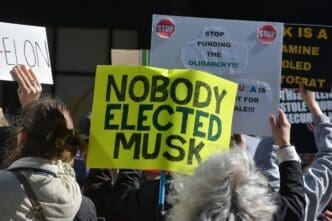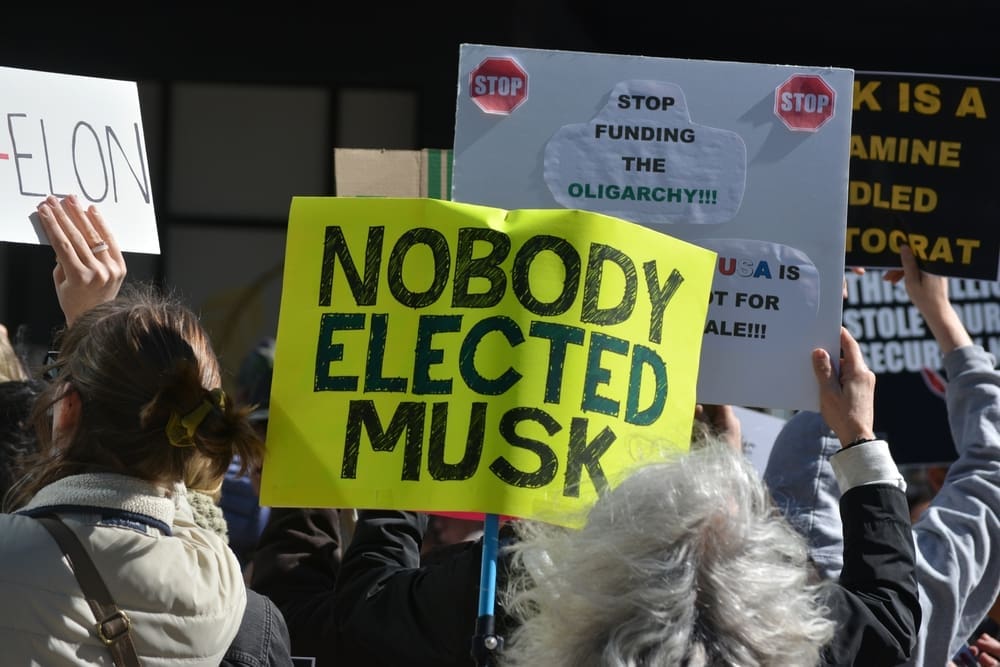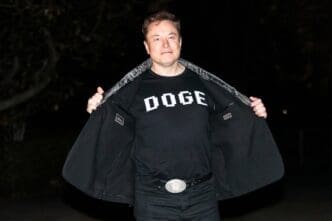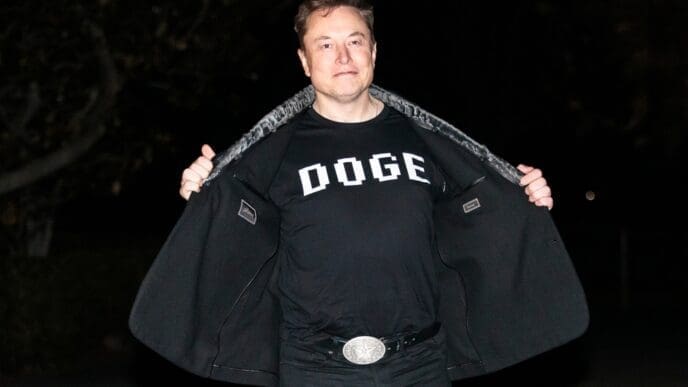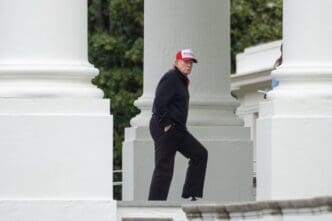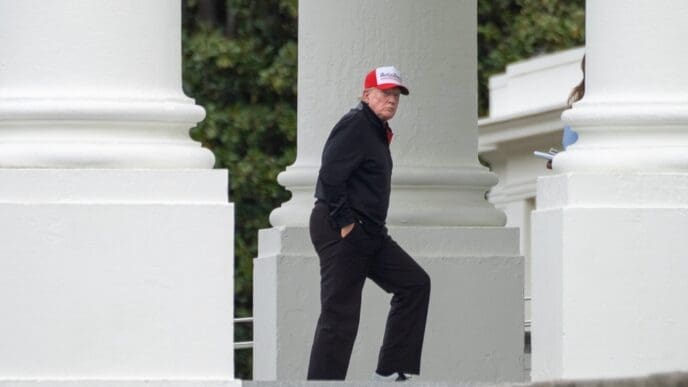Protests erupted outside Tesla dealerships across the United States and in various European cities on Saturday, as crowds voiced their discontent with billionaire Elon Musk’s controversial role in the U.S. government under President Donald Trump.
Demonstrators are targeting Tesla, aiming to impact the wealth of Musk, the world’s richest man, following his appointment as head of the newly established Department of Government Efficiency, or DOGE. This position has allowed Musk access to sensitive data and the authority to shut down government agencies in a bid to cut spending.
The focal point of the protests is Musk’s significant stake in Tesla, an electric vehicle company he continues to run while collaborating with Trump. Saturday marked a coordinated effort to influence Tesla’s sales by surrounding all 277 showrooms and service centers in the U.S. Demonstrations gathered sizable crowds, ranging from dozens to hundreds, at various locations including New Jersey, Massachusetts, Connecticut, New York City, Maryland, Minnesota, and Texas.
Social media was flooded with images of protesters carrying signs with slogans like “Honk if you hate Elon” and “Fight the billionaire broligarchy.” As the protests gained momentum, they spread to major cities such as Washington, Chicago, Indianapolis, Cincinnati, and Seattle, as well as smaller towns in Virginia, Pennsylvania, and Colorado. Meanwhile, smaller groups of counterprotesters also made appearances at some sites.
In Dublin, California, chants of “Hey, hey, ho, ho, Elon Musk has got to go!” echoed outside a Tesla showroom, while a smaller group of Trump supporters waved American flags nearby. Meanwhile, a larger congregation marched to the beat of drums in Berkeley, advocating against what they termed a “fascist state.” Dennis Fagaly, a retired teacher from Oakland, expressed his concern, saying, “We’re living in a fascist state, and we need to stop this or we’ll lose our whole country and everything that is good about the United States.”
The movement, known as Tesla Takedown, also sought to galvanize support globally, with over 230 locations targeted for protests. Although European turnout was smaller, the anti-Musk sentiment was palpable. In London, around two dozen protesters held signs criticizing Musk, with some referencing his alleged connections to Nazi imagery, a charge Musk faced shortly after Trump’s inauguration.
Cam Whitten, an American who joined the London protest, emphasized, “We just want to get loud, make noise, make people aware of the problems that we’re facing.” The Tesla Takedown initiative is backed by disillusioned Tesla owners, celebrities like actor John Cusack, and even Democratic lawmakers such as Rep. Jasmine Crockett from Dallas, who urged supporters to continue their activism both publicly and politically.
While most demonstrations remain peaceful, some individuals have resorted to vandalism, including setting Tesla vehicles on fire. U.S. Attorney General Pam Bondi condemned these actions as domestic terrorism. Police are currently investigating a fire that destroyed seven Tesla cars in Germany, though its connection to the protests is unclear.
Despite the backlash, Musk remains optimistic about Tesla’s future. During a company meeting in March, he downplayed the protests’ impact and reassured employees that the Model Y would continue to be the top-selling car globally. He projected that Tesla would surpass 10 million car sales worldwide by next year, up from the current 7 million.
Initially, Musk’s collaboration with President Trump was viewed positively by investors, boosting Tesla’s stock by 70% following the election. However, these gains have largely dissipated due to concerns over the protests, sluggish sales in the U.S., Europe, and China, and Musk’s focus on his governmental role.
The Ripple Effect
- Economic Impact: Continuous protests could potentially affect Tesla’s sales and stock value, influencing the broader electric vehicle market.
- Political Repercussions: The backlash against Musk may spur further political activism and influence upcoming elections, particularly concerning government spending policies.
- Public Awareness: The protests highlight issues of corporate influence in government, possibly increasing public scrutiny and demand for transparency.
- Consumer Behavior: Discontent among Tesla owners might lead to shifts in brand loyalty and influence purchasing decisions for potential buyers.
- Community Dynamics: The presence of both protesters and counterprotesters could alter local community interactions, sparking dialogue on political and economic issues.
- Environmental Considerations: Any decline in Tesla’s growth could impact the global transition to sustainable energy and electric vehicles.

